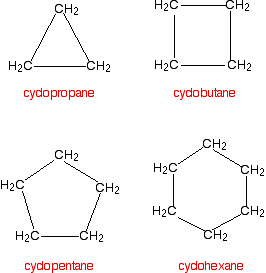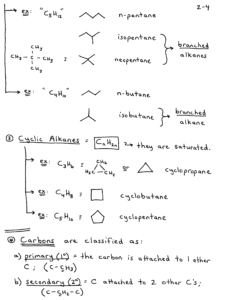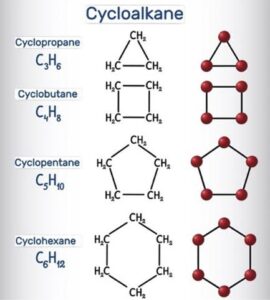Back to: Organic Chemistry 100 Level
Welcome to class!
Hi there, superstar! It’s always a joy having you here. I hope you’re feeling energised and ready, because today, we’re going to learn something super interesting — Alkanes and Cycloalkanes. This is one of the easiest and most enjoyable parts of Organic Chemistry, and I’ll walk with you all the way. Let’s begin!
Alkanes And Cycloalkanes
What are Alkanes?
Let’s imagine you’re holding hands with a few friends, all in a straight line. Each of you is linked by one strong, simple grip. That’s exactly how carbon atoms connect in alkanes — each carbon bonds with other atoms through single bonds only. Alkanes are called saturated hydrocarbons because all their bonds are single. They are made up of only carbon and hydrogen.

They follow a simple pattern, known as a general formula, which is written as CₙH₂ₙ₊₂. That means if an alkane has one carbon atom, it will have four hydrogen atoms — that’s methane (CH₄). If it has two carbon atoms, it becomes ethane (C₂H₆), then propane (C₃H₈), and so on. These are the kinds of compounds we find in cooking gas, petrol, and kerosene — things we use every day in Nigeria.
Alkanes are quite peaceful; they don’t react easily with other chemicals, but they burn very well, which is why they are excellent fuels.
Naming Alkanes
To name alkanes, you simply count the number of carbon atoms in the longest chain, and add the ending –ane. For example:
One carbon: methane
Two carbons: ethane
Three carbons: propane
Four carbons: butane
If there are any side chains (like branches coming off the main chain), you give them a name too and number the carbon chain so you know where each side chain is attached. But for now, focus on recognising and naming the straight-chain ones.

What are Cycloalkanes?
Now imagine those same friends holding hands, but instead of standing in a straight line, they form a circle. That’s what cycloalkanes are — carbon atoms arranged in a ring, but still joined by only single bonds. They are also saturated hydrocarbons, but their atoms form a closed loop instead of a straight chain.
The general formula for cycloalkanes is CₙH₂ₙ. Notice how they have fewer hydrogen atoms than alkanes because the ring closes up and doesn’t need extra hydrogens at the ends.
Some common cycloalkanes include cyclopropane (3 carbon ring), cyclobutane (4 carbon ring), and cyclohexane (6 carbon ring). Cycloalkanes are used in making plastics, paints, medicines, and sometimes even perfumes.
Difference Between Alkanes and Cycloalkanes
Here’s how to tell them apart easily:
Alkanes have an open-chain structure — they go straight or branch out, like a line of school children. Cycloalkanes, on the other hand, are closed rings — like children forming a circle during a game. Also, alkanes follow the CₙH₂ₙ₊₂ pattern, while cycloalkanes follow CₙH₂ₙ.

Real-Life Uses.
In our daily Nigerian life, alkanes are found in cooking gas (butane), car fuel (octane), and kerosene. Cycloalkanes are important in making everyday items like plastic chairs, rubbers, and even parts of engine oils.
Summary
Alkanes are simple, straight or branched organic compounds with only single bonds and follow the formula CₙH₂ₙ₊₂. Cycloalkanes are similar but form rings and follow the formula CₙH₂ₙ. Both are saturated hydrocarbons and are useful in fuels, plastics, and many household products.
Evaluation
- What is the difference between alkanes and cycloalkanes?
- Write the formula for propane and name its homologous series.
- Explain why alkanes are called saturated hydrocarbons.
- What is the general formula of cycloalkanes?
- Mention two everyday uses of alkanes in Nigeria.
Fantastic work today! You’ve just understood a powerful part of Organic Chemistry — and you did it with style! Keep pushing, keep learning, and always remember that with Afrilearn, every lesson brings you closer to your dreams. I can’t wait to see you in our next class. You’re unstoppable!
